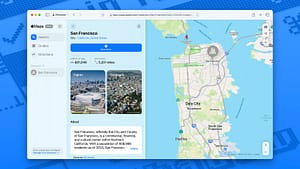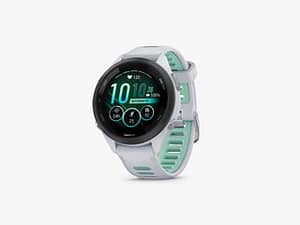The best sleep trackers of 2025: I slept with these sleep trackers to find the best one
Why we like it: If you want a sleep tracker that will keep your athletic goals in mind, the Whoop is your best bet.
Whoop delivers daily sleep and recovery scores, but it also gives you a strain target you're encouraged to meet, based on the night's sleep and morning's readiness. I'm currently following a weight-training and diet regimen, and I've found the strain target invaluable. The Whoop's daily outlook tab summarizes my morning data and then provides me with exercises and durations for hitting my strain target. For example, one morning it prescribed me either a 30-minute run, a 70-minute elliptical session, or a 30-minute weightlifting session to reach my 13.5 strain target. The tracker made these recommendations after it registered my 88% sleep score and 80% recovery score.
The Whoop is another reliable, accurate sleep tracker. One study performed by Central Queensland University found that the Whoop was 99.7% accurate in measuring heart rate and 99% accurate in measuring heart rate variability during sleep. Compared to polysomnography, the Whoop also correctly identified sleep and calculated total time spent asleep.
The sleep debt feature is also a great way to keep track of your caught-up -- or not-caught-up -- sleep. Whoop tells you once you've reduced or gained sleep debt and encourages more or maintained rest. It also comes packed with graphs displaying weekly averages, your sleep hours versus your sleep need, performance, and consistency. Unlike Oura, which employs separate tabs for daily and weekly sleep data, I enjoy how all my sleep data is available in one place.
Also: I wore the Whoop 5.0 -- it gave me the best of Apple Watch, Oura Ring, and more
Who's it for: Whoop just announced its three new annual subscription tiers starting at $200 and going all the way up to $360.
At $200, the Whoop One membership is the least feature-rich option with only sleep, strain, and recovery tracking. It also features V02 max and heart rate zone monitoring, alongside hormonal health insights. For $240, Peak has all the aforementioned features, plus Whoop's new Healthspan and Pace of Aging feature, a Health Monitor feature, and stress monitoring.
Life is the most expensive tier at $360. This tier adds blood pressure and ECG monitoring, as well as advanced health sensor tech. The Life tier comes with a Whoop MG -- medical grade -- band, while the One and Peak tiers come with the Whoop 5.0 band.
In short, it's going to cost you at least $200 a year to use this device. You could buy an older generation Apple Watch for that very price and never have to pay a subscription on it. The ideal customer for the Whoop is someone who is an avid health and fitness junkie, kind of like a more intense Oura user. This person is actively training and refining their athletic performance and also wants to learn more about their body's capacity through features like Healthspan or Pace of Aging.
The Whoop will be an effective sleep tracker for people who want to optimize their training regime for a steep price.
Who should look elsewhere: The Whoop is the most expensive sleep tracker on this list. If you want a sleep tracker with similar functionalities but a cheaper or nonexistent subscription, I'd recommend the Oura Ring 4. The ring costs $350 and then $70 for an annual subscription that offers full access to all your health data. Some users are even happy with the limited access provided without a subscription.
If all this health data is overhwelming, I'd also recommend the Apple Watch Series 10 instead or even an earlier model if you wanted a cheaper sleep tracker. The Apple Watch Series 8 and later include the Vitals app, which is essential for sleep tracking.
Whoop 5.0 specs: Up to 14 days battery life | Sleep cycles | Bluetooth | 1.5 x 1.5 x 0.45 inches | IP68 water resistant | Blood oxygen, skin temperature sensor, heart rate, menstrual tracking | iOS and Android compatible
Pros
- Detailed sleep tracking for athletes
- Personalized sleep coach
- Sleep debt feature
- Annual membership subscription that just got even more expensive
Whoop 5.0
Best sleep tracker for athletes
4.7 / 5 ScoreWhy we like it: If you want a sleep tracker that will keep your athletic goals in mind, the Whoop is your best bet.
Whoop delivers daily sleep and recovery scores, but it also gives you a strain target you're encouraged to meet, based on the night's sleep and morning's readiness. I'm currently following a weight-training and diet regimen, and I've found the strain target invaluable. The Whoop's daily outlook tab summarizes my morning data and then provides me with exercises and durations for hitting my strain target. For example, one morning it prescribed me either a 30-minute run, a 70-minute elliptical session, or a 30-minute weightlifting session to reach my 13.5 strain target. The tracker made these recommendations after it registered my 88% sleep score and 80% recovery score.
The Whoop is another reliable, accurate sleep tracker. One study performed by Central Queensland University found that the Whoop was 99.7% accurate in measuring heart rate and 99% accurate in measuring heart rate variability during sleep. Compared to polysomnography, the Whoop also correctly identified sleep and calculated total time spent asleep.
The sleep debt feature is also a great way to keep track of your caught-up -- or not-caught-up -- sleep. Whoop tells you once you've reduced or gained sleep debt and encourages more or maintained rest. It also comes packed with graphs displaying weekly averages, your sleep hours versus your sleep need, performance, and consistency. Unlike Oura, which employs separate tabs for daily and weekly sleep data, I enjoy how all my sleep data is available in one place.
Also: I wore the Whoop 5.0 -- it gave me the best of Apple Watch, Oura Ring, and more
Who's it for: Whoop just announced its three new annual subscription tiers starting at $200 and going all the way up to $360.
At $200, the Whoop One membership is the least feature-rich option with only sleep, strain, and recovery tracking. It also features V02 max and heart rate zone monitoring, alongside hormonal health insights. For $240, Peak has all the aforementioned features, plus Whoop's new Healthspan and Pace of Aging feature, a Health Monitor feature, and stress monitoring.
Life is the most expensive tier at $360. This tier adds blood pressure and ECG monitoring, as well as advanced health sensor tech. The Life tier comes with a Whoop MG -- medical grade -- band, while the One and Peak tiers come with the Whoop 5.0 band.
In short, it's going to cost you at least $200 a year to use this device. You could buy an older generation Apple Watch for that very price and never have to pay a subscription on it. The ideal customer for the Whoop is someone who is an avid health and fitness junkie, kind of like a more intense Oura user. This person is actively training and refining their athletic performance and also wants to learn more about their body's capacity through features like Healthspan or Pace of Aging.
The Whoop will be an effective sleep tracker for people who want to optimize their training regime for a steep price.
Who should look elsewhere: The Whoop is the most expensive sleep tracker on this list. If you want a sleep tracker with similar functionalities but a cheaper or nonexistent subscription, I'd recommend the Oura Ring 4. The ring costs $350 and then $70 for an annual subscription that offers full access to all your health data. Some users are even happy with the limited access provided without a subscription.
If all this health data is overhwelming, I'd also recommend the Apple Watch Series 10 instead or even an earlier model if you wanted a cheaper sleep tracker. The Apple Watch Series 8 and later include the Vitals app, which is essential for sleep tracking.
Whoop 5.0 specs: Up to 14 days battery life | Sleep cycles | Bluetooth | 1.5 x 1.5 x 0.45 inches | IP68 water resistant | Blood oxygen, skin temperature sensor, heart rate, menstrual tracking | iOS and Android compatible








Post Comment